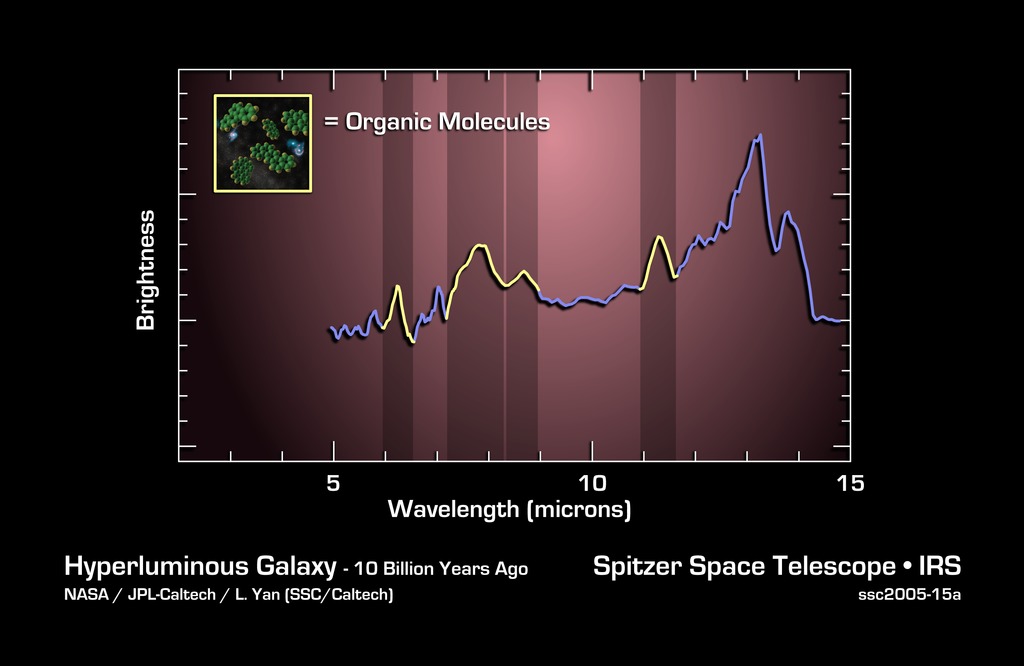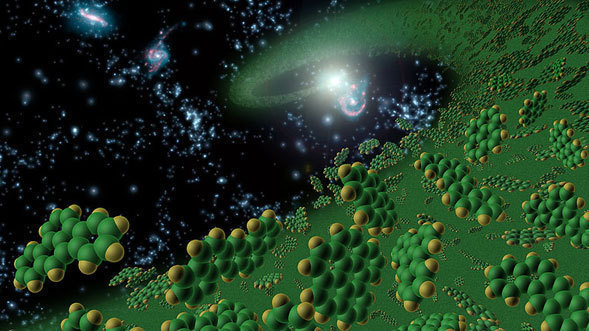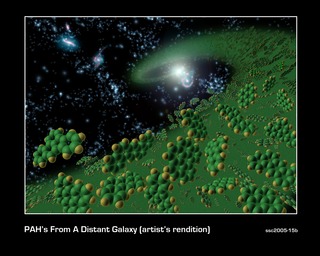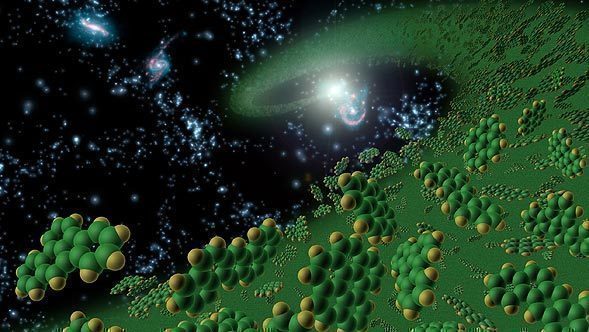
Credit: NASA/JPL-Caltech/L. Yan (SSC/Caltech)
Chart • July 28th, 2005 • ssc2005-15a
ssc2005-15a
This graph, or spectrum, charts light from a faraway galaxy located 10 billion light years from Earth. It tracks mid-infrared light from an extremely luminous galaxy when the universe was only 1/4 of its current age.
Spectra are created when an instrument called a spectrograph spreads light out into its basic parts, like a prism turning sunlight into a rainbow. They reveal the signatures, or "fingerprints," of molecules that make up a galaxy and contribute to its light.
Spitzer's infrared spectrometer identified characteristic fingerprints of complex organic molecules called polycyclic aromatic hydrocarbons, illustrated in the artist's concept in the inset. These large molecules comprised of carbon and hydrogen, are considered among the building blocks of life.
Scientists determined it took 10 billion years for photons from this galaxy to reach Spitzer's infrared eyes. These complex carbon and hydrogen molecules are from a young galaxy which is undergoing intense star formation, at the time the universe was only 3.5 billion years old.
These distant galaxies with enormous amounts of gas being converted into young stars are some of the most luminous objects in the sky. Enshrouded by dust, they are only faint, inconspicuous little dots in optical images. They are as bright as 10 trillion suns put together and 10 times brighter than starburst galaxies seen in our local universe.
This prompts a fascinating question as to what physical process is driving such enormous energy production in these galaxies when the universe is so young. These data were taken by Spitzer's infrared spectrograph in August and September 2004.
About the Object
- Name
- Type
- Galaxy > Activity > Ultraluminous
- Distance
- 10,000,000,000 Light Years
- Redshift
- 1.828
Color Mapping
| Band | Wavelength | Telescope |
| Infrared | 5.0 µm | Spitzer IRS |
| Infrared | 15.0 µm | Spitzer IRS |
Astrometrics
- Position ()
- RA =17h 13m 50.0s
- Dec = 58° 56' 56.8"
- Field of View
- 0.0 x 0.0 arcminutes
- Orientation
- North is up







